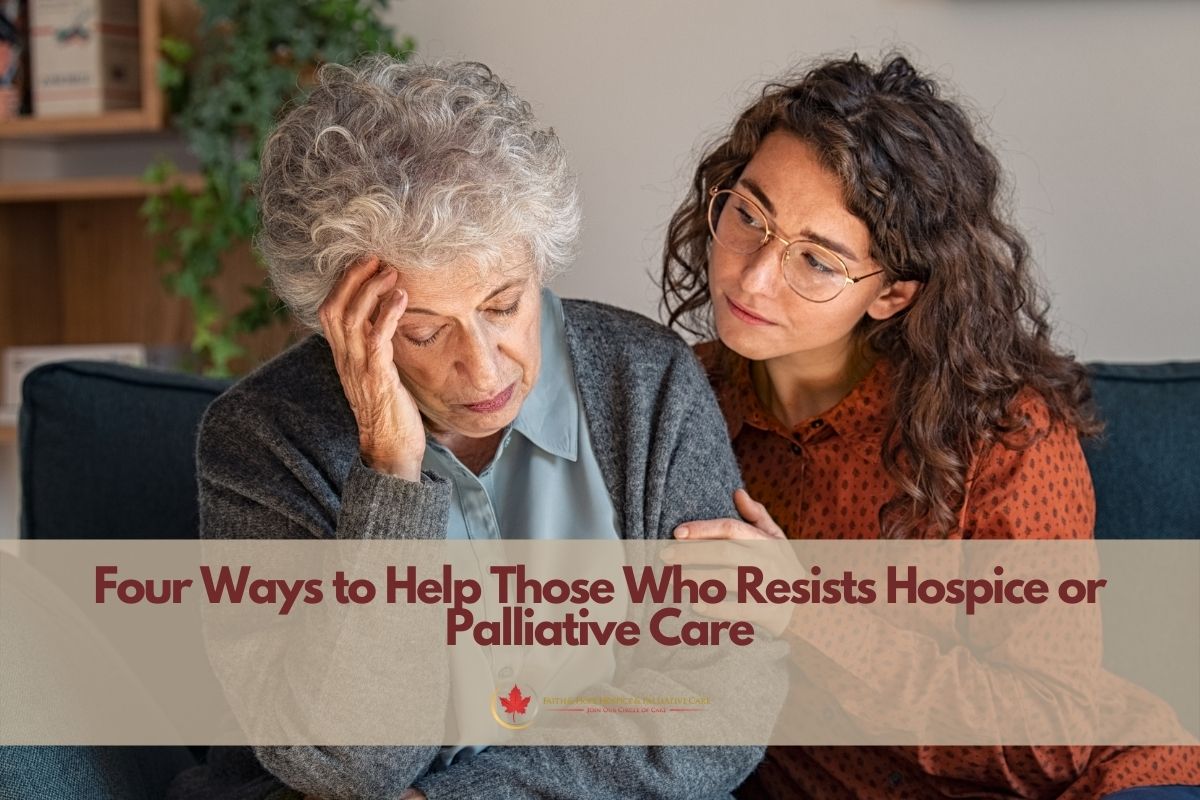
- By: administrator
- Blog
- No Comments
Everyone truly understands that taking care of a loved one, especially when they resist hospice or palliative care in Los Angeles, can be a challenge. It can be troublesome for the elderly to admit that they require help, and even when they do understand their drawbacks, they sometimes find it hard to accept the help that is offered to them since they do not want to be a thorn in one’s side to those around them.
Many elderly people requiring palliative or hospice care in Los Angeles are specifically worried about change, whether they are changes to their environment or skills or the loss of things that are well-known to them and that they consider very precious.
When an elderly loved one refuses hospice or palliative care that they need, it can establish a stressful mix of logistical issues and emotional problems. Many people who have loved ones in hospice Los Angeles have said that watching a loved one push you away can be aggravating and disheartening.
Admitting that a loved one’s health has deteriorated so much that going for further medicinal treatment is either impractical or impossible is a difficult thing to do. Choosing comfort care is usually the next step, but many patients and their family members dilly dally or second-guess themselves when this sensitive decision comes about. Nevertheless, families can lose out on valuable time with terminally ill loved ones if they wait too long to begin hospice or palliative care.

Four Ways To Help A Loved One Who Refuses Care
Terminally ill individuals often experience pain as they come nearer to the end of life. One of the most well-known purposes of hospice care is to improve a dying person’s quality of life by alleviating as much of this pain as possible. The sooner a senior receives a hospice referral, the sooner they can get relief from pain and other physical symptoms in lieu of curative treatment.
Normally, terminally ill people experience pain as they come to the end of life.
If you find yourself having to cope with a person who is resistant to hospice or palliative care in Los Angeles, here are four tips to help them.
Figure Out If Cognitive Impairment Is An Issue
Not everyone who gets older will suffer from cognitive impairment, but it is not unusual for the human brain to become damaged and weak as the years pile up. This can influence an older adult’s judgment and the way they process any logical arguments that you put forward for the reason you believe they require assistance.
If you have a suspicion that cognitive impairment is a catalyst, keep in mind that some types of this impairment may be changeable. For instance, some elders requiring palliative care in Los Angeles will develop a type of delirium when they have been in hospital or are ill. In some circumstances, it can be weeks or months to get back to their optimum thinking abilities. Particular medications and conditions such as hypothyroidism might also burden their cognition.
Once in a while, however, the issue is linked to underlying dementia that has not been correctly diagnosed or addressed. If you think your loved one is cognitively impaired, talk to an expert to evaluate their decision-making capacity.
Talk About Your Loved One’s Goals
Many clashes that elderly people have with their families are because they yearn for liberty and independence. Unfortunately, when an elderly person’s health or mind is defenseless, it is impossible to provide them with total independence because of safety concerns.
When they are asked to choose between safety and freedom, most elderly adults will go for freedom, especially those with dementia. Talk to your loved ones about their goals regarding living situations and their medical care, and try to figure out what type of arrangements they may be willing to accept.
A good majority of older people have a strong desire to live in their own homes for as long as possible. In some cases, hospice or palliative care can take place in a person’s home and let them enjoy a good quality of life on their terms while reducing their suffering.
Also, it may be helpful to explain to your loved ones that getting care could prolong their independence as some relief could help them stay in their own residence for as long as possible.
Suggest A Test Run
If the care topic leads to unnecessary stress and your loved one is feeling pressured to make a final decision, a change in attitude can go a long way. Inform them that the type of care they get is not something that they must decide on right away. Put in their mind that they should go through a test run, so they have an opportunity to test the waters on the type of care you are offering. This could give them the chance to realize the advantages of assistance and alleviate any fears they have about how it will function.
Tell Them That You Hear Them
Problems associated with a person’s identity and liberty can result in emotional responses. Confirming your loved one’s emotions can help immensely when moving toward opening the lines of communication. Make an effort to be aware of the emotions your loved one is experiencing.
When you are discussing, use active listening to make sure your loved ones feels like they are being heard. If need be, you can ask them directly to share their feelings by telling them you want to understand more about their stance on the situation.
If you have to, you may think about getting help from a professional. Your loved one may be more willing to listen to advice that comes from a doctor, lawyer, or care manager when it comes to the importance of receiving care. Another option is to collaborate with a professional who is experienced in helping families handle age issues, such as relationship therapists.
Get In Touch With Faith & Hope Hospice And Palliative Care
If your loved one is resisting care and is dealing with a life-limiting illness, talk to the professionals at Faith & Hope Hospice and Palliative Care to learn how they can improve their quality of life, and help you tackle the topic of care in a way that your loved one may be more receptive.
